- Home
- Ray Bradbury
Yestermorrow Page 3
Yestermorrow Read online
Page 3
Where can we go that isn’t home? What can we see that isn’t TV? Why were we astonished two years back when the kids, evicted from every community by default, confronted our city fathers and the law on the new-found Sunset Boulevard stamping grounds? How do we build proper new stamping grounds in proper places for proper peoples?
Here is my remedy. A vast, dramatically planned city block. One to start with. Later on, one or more for each of the 80 towns in L.A.
My block would be a gathering place for each population nucleus. A place where, by the irresistible design and purpose of such a block, people would be tempted to linger, loiter, stay, rather than fly off in their chairs to already overcrowded places.
Let me peel my ideal shopping center like an onion:
At the exact center: a round bandstand or stage.
Surrounding this, a huge conversation pit. Enough tables and chairs so that four hundred people can sit out under the stars drinking coffee or Cokes.
Around this, in turn, would be laid the mosaics of a huge plaza walk where more hundreds might stroll at their leisure to see and be seen.
Surrounding the entirety, an immense quadrangle of three dozen shops and stores, all facing the central plaza, the conversation pit, the bandstand.
At the four corners of the block, four theaters. One for new films. A second for classic old pictures. A third to house live drama, one-act plays, or, on occasion, lectures. The fourth theater would be a coffeehouse for rock-folk groups. Each theater would hold between three hundred and five hundred people.
With the theaters as dramatic environment, let’s nail down the other shops facing the plaza:
Pizza parlor. Malt shop. Delicatessen. Hamburger joint. Candy shop. Spaghetti cafe…
But, more important, what other kinds of shops are most delicious in our lives? When browsing and brooding, what’s the most fun?
Stationery shops? Good. Most of us love rambling among the bright papers in such stores.
Hardware shops? Absolutely. That’s where men rummage happily, prowling through the million bright objects to be hauled home for use some other year.
Two bookstores, now. Why not three?!
One for hardcovers, one for paperbacks and the third to be an old and rare bookseller’s crypt, properly floundered in dust and half-light. This last should have a real fire-hearth at its center where, on cool nights, six easy chairs could be drawn about for idling bookmen/students in séance with Byron’s ghost, bricked in by thousands of ancient and honorable tomes. Such a shop must not only spell age but sound of its conversations.
How about an art supply shop? Fine! Paints, turpentines, brushes, the whole lovely smelling works. Next door? An art gallery, of course, with low- and high-price ranges for every purse!
A record shop, yes? Yes. They’ve proven themselves all over our city, staying open nights.
What about a leather shop, and a tobacconist’s… but make your own list from here on! The other dozen or two dozen shops should be all shapes, sizes and concepts. A toy shop. A magic shop, perhaps, with a resident magician.
And, down a small dark cob-webbed alley, maybe a ramshackle spook theater with only 90 seats where every day and every night a different old horror film would scuttle itself spider-wise across a faintly yellow parchment-screen…
There you have my remedy. There’s my plan to cure your urban ills.
Good grief! you cry, what’s so new about that!?
Nothing, I reply, sadly. It’s so old it now must become new again. Once it was everywhere in some form. Now it must be thought of and born all over again. It has existed in the arcades surrounding St. Mark’s Square in Venice, Italy, for more than five hundred years. It exists in the Galleria in Milan where, one hundred years ago Mark Twain fell in love with it and wanted to stay on forever at its “tables all over these marble streets, people sitting at them, eating, drinking, smoking—crowds of other people strolling by—such is the Arcade. I should like to live in it all my life. The windows of the sumptuous restaurants stand open, and one dines and enjoys the passing show.”
If we could summon Mark Twain back from the dead he might well point out, ironically, that we already have many such plazas in Los Angeles, which have languished and fallen into disuse. We have forgotten the reasons why Pershing Square and the Olvera Street Plaza were built 50 and 150 years ago, as centers about which to perambulate souls and refresh existences.
Most of the elements I speak of are available on Hollywood Boulevard or the Sunset Strip. But there the automobile spoils and finally ruins any chance for real encounter, and the supermobs prevent leisurely enjoyment.
Olvera Street, already mentioned, fulfills many of my requirements, as does, on a large scale, Disneyland. You can indeed sit, eat, lounge and stare at Uncle Walt’s, but you don’t really go there to shop, and it isn’t a community center, but a Southern California asset.
Century City qualifies in many ways. But it has no true center, the plaza sitting/eating area that would give it identity. Nor are there plans that I know of to give that new community a real navel. It will finally be a series of fine islands, each kept incommunicado from the other, cut off by villainous avenues and murderous cars. If dramatic reason prevails in time, the new theaters being built there should be connected by fantastic moving sidewalks that would gloriously transport visitors out of the theaters and over to the main restaurant/shop arena.
The Santa Monica Mall suffers for similar reasons. It has no true center. And, most nights, the stores close early.
The Farmers Market is a grand social gathering place for food. But it goes dark at six each night, seven in the summertime.
Which inevitably brings us to a rethinking of our ideas on social life and business hours.
Life really begins at dusk in Rome. In the blue hour, and late on through the idle evening, shopping continues, mixed with time to wander, linger, sit, and stare.
The Plaza I have constructed here should never be built unless it opens for business at three each afternoon. Week nights it should stay open until at least 11:00. Friday, Saturday and Sunday nights the closing hour should be 1:00 or 2:00 A.M.
Will this take some real doing? Yes. Because your average small American businessman is locked into a nine to five schedule. No new hours are worth considering. So, thousands of new customers are ignored and your small business flounders for seemingly inexplicable reasons.
Take Pico Boulevard all the way to the ocean, or Western Avenue most of the way to Long Beach, and what do you find? Small businessmen flaking away, dying, vanishing, on all sides, mile after mile. With no pedestrians, they survive by their frail wits. The same lost and dreary little shops seem to have lingered on, changeless, from my childhood.
And if by chance there is pedestrian traffic on one side of Sunset, let’s say, the shops immediately across die because no one crosses over. At Pico and Westwood, the stores on the north side rent for less because their income is far less than the shops on the south side, where the immense gravity of thousands of parking spaces attracts a large number of cars.
So your small businessman has many reasons to affiliate himself in such an amiable environmental plaza as the one I propose, where he will be guaranteed a fresh river of pedestrians every hour. And being situated on the north, south, east or west side of the plaza will not affect his business by so much as a cent.
Bring that small businessman in, then, into this effort to recenter our lives. Give the community back to the community, to build a base for young and old, and discourage the endless miles of mindless driving as millions of people pass other millions looking for Somewhere To Go.
But, the Somewhere To Go will only work, I repeat, if it opens late and closes late.
Los Angeles, at this very moment, has many smaller shopping centers that stay open fairly late but which are, instantly, unappetizing. Arriving, one sees thousands of cars, acres of blacktop and confusion. Or, if the cars are hidden out back, as at the Santa Monica Mall or the small
plaza near the May Co. at Pico-Overland, you find, once again, the same mistake—no true center, no dramatic watering trough for one’s imaginary horses, no place where one can whittle, spit, and scratch.
Ocean Park, before it was improved out of existence, once had to perfection all the things I most desire.
No, I don’t mean P.O.P. I mean the old Ocean Park fifteen years ago, with its bingo parlors and pastrami dips and pizza shanties, its bookshops, its theater, the seedy pier itself with all its frayed games, and thousands of places to sit and snooze or yammer and gossip. It’s gone now, its shops plowed under and concreted over. Its good people have been real-estated, delegated, outlawed away, pent up for some unnamed sins in those dreadful new tenement towers that front the beach, and not allowed out. What’s to go out for, if you dared? No one bothered to think, to remember, to rebuild the small shops. No one had even a small dream that maybe old and young might like to deliciously collide and saunter in thousands of small, warm crowds as they once did night and day by that beautiful sea.
A shred of that grand old Ocean Park is stranded high and dry, praise God, right now on Fairfax Avenue. There, by sheer fine good Jewish community spirits, I find the kind of life I have been describing in this article. With Canter’s Delicatessen as social gymnasium center, and many shops open most nights, it is one of the last few lost places for us to Flee, Go Find, for us to actually Look, See Friends! As in the thirties when just such social assemblages of familiar faces happened every night in our lives around Western and Olympic, Beverly Boulevard and Vermont, or Vermont and Washington, where life, not very high but certainly not low, was lived.
Let me beat the long dead urban horse once more, and then recapitulate.
Two years ago, I lectured one Saturday night in Pasadena. Finishing about 8:30, I walked down into the heart of Pasadena searching for a cab.
The streets and sidewalks were empty! No cars. No people. And this, mind you, early on a Saturday night. It looked more like Sunday sunrise in Zion, Illinois.
Finding a cab, I made it to Hollywood. There, at Vine Street, I found a far more unnerving sight: traffic blocked for a mile in four directions. Beetle infestations of automobiles loomed and burnt out their motors everywhere. Thousands of people jammed the sidewalks.
The facts are plain and sad. Pasadena, and many places like it, is shut. Hollywood, with its good and bad, hustlers and prosties and yellow-robed Buddhist chanters and singers, is open. The Pickwick Bookshop, true center of Hollywood for most of us, is wall-to-wall people every night but Sunday.
I could list hundreds of similar community examples. But they all add up to our singing a blues version of that old song, “Where Is My Wandering Boy Tonight?” We ought to know. We helped drive him off and away.
Which brings us round to a final description of my Plaza:
• Bandstand at the center on which local talent can sing and play.
• Four hundred or five hundred chairs surrounding the bandstand, where people can sit all night, every night, under the heavens. In winter, such as it is in California, outdoor heating can be installed.
• Around this, the great pedestrian treadway. On this, real people actually walking!
• And around them, in turn, the shops, the theaters.
• Underneath: parking. Or the next block over, hidden, for God’s sake, behind bushes and trees.
Final points:
• In all eating places, plenty of booths facing each other, for conviviality. Too many places, like Baskin-Robbins, have seats lined up against the walls. The message implied is: So Long. Get Away. Good-bye.
• Again: late hours. Better a small businessman working till midnight than a small businessman bankrupt and on relief.
If you can’t build a large plaza, build a small one with just one or two theaters and a dozen shops. The most important element that remains constant is the center, the conversation pit, the plaza walk-around concourse where people know, are absolutely sure if they bother to go, they will see someone they knew from junior high, high school, college or some neighboring area. The Bunch, The Gang, The Friends must have a Hearth.
Let’s start with one plaza such as this, and build more. Needless to say, the ones that follow must not duplicate the first in texture or color or sense of drama. The plaza conceived in Fullerton should not be repeated in Pacoima, Watts or Baldwin Park.
Just as in the great cities of the world, there is only one Eiffel Tower for Paris, one Tower of London, one St. Peter’s for Rome, so, on a lesser level, each plaza in all the 80 lost and needful Los Angeles small towns should in some way strike individual chords of the Mexican, Jewish or Black backgrounds they arise from. In West Hollywood, of course, you would let the crazy fine Greenwich Village spirit that runs wild there work your design for you.
We have been yelling for years against the Orwellian world of 1984, and at the same time have been busy building such a world and walling ourselves in.
Now we must remember that drama and theater are not special and separate and private things in our lives. They are the true stuffs of living, the heart and soul of any true city. It follows we must begin to provide architectural stages upon which our vast populations can act out their lives.
Many plazas exist now, waiting to be rehabituated, redramatized, like the Main Street Plaza and Pershing Square. Others, like the Santa Monica Mall, or Century City, lack only a true pedestrian walk-around center to make their hearts beat. Most must be built from the ground up.
And, in building, it seems, we must look back to the dear Jews and the rare Latins to learn how to live.
O Children of Israel, come out of Fairfax and old Boyle Heights. Send us your architectural rabbis to lead us from the wilderness of the blacktop and oil drips and gasoline fumes. Open our eyes so we may see. Sit us down so we may rest. Open our mouths so we may talk and eat…
O small towns of Mexico, send us your mariachis to strum at the centers of our plazas to bring the people back, the girls wandering this way, the boys ambling that, two warm rivers running softly over the wide mosaic walks.
Dear Moses, sweet Virgin of Guadalupe, teach us Gentile Protestants how once more to spend an evening that is neither far-traveling and senseless, nor violent, nor sick, nor hidden away from the world in colored but colorless TV.
Inhabitants, inheritors of Tel Aviv and Guadalajara, hear me now. The hour grows late. Help, o help. Give us back to ourselves.
For what finer gift is there in all the world?
1970
THE AESTHETICS OF LOSTNESS
Written as a conceptual design for Horton Plaza in San Diego.
To be lost. How frightening.
To be safely lost. How wonderful
To not know where we are, as children, is a nightmare.
To not know where we are, as adults, traveling, is a perfect dream.
I know not if others have dared an essay on this subject. I have rambled on about it for years and feel I should now get it out on the pavements.
Think back on your first trip to New York, London, Paris or Rome. Large cities, preferably, for then the chance of getting deliciously lost is enhanced.
Do we fly to far places, then, to get our weathercocks spun north for south, west for east?
We do not set out for that. But that is the secret part and portion of our adventures.
To wander down Piccadilly, turn left, and suddenly say: “Where the hell am I?”
Or to set off in the wrong direction from the Spanish Steps and freeze—wondering which right or left turn to make.
And then the reverse situation—
A week, two weeks, or a month later, figuring the whole damn thing out and suffering what might well be called the Travel Blues. In other words, wanting to be on the move again, to plan again, to know that arriving is okay, but the mysterious journey is the best reason for living. Now, having figured out a town or a city, you are seized by the Desperate Empties.
London as a puzzlement is superb.<
br />
London, with its puzzles solved, deflates.
Temporarily, of course. London and Paris are so gigantic it is easy to find new places wherein to vanish and be safe and all in one piece happily reappear. I would not recommend this procedure, this year in New York. Such vanishing might result in a permanent disappearance.
What am I getting at? Why this raving on about environmental inscrutability and the bewildered traveler? Well, most certainly one of the reasons we jet to other lands and other towns is the boredom of the too-familiar at home. We go to Hong Kong and Tokyo not for the reason that we profess, but for the education that leaps upon us unbidden, and the romance that hides around a corner to vanish us for an hour or a day. At the eternally young core of any sojourn is the surprise and delight of being confounded and happily sunk in indecision.
All right, Bradbury, get to it.
The sum?
We have begun to build cities that are too easily solved. There is no mystery, no imaginative lure, no texture in the blank facades, the empty and expressionless faces of banks or other corporate structures. This plus no candy, book, or sweet shops means that when the bank shuts and the IBMers gas on home, the city drops dead. You can skate through those places at 50 miles an hour, for there is nothing to see, nothing to wonder about or linger over. There is no bafflement.
The blind buildings do not even hold out a tin cup, asking for dimes. So, because no texture, no attraction, no chance for you to be enticed into even trying to get lost.
What can we learn from this?
That even in our interior malls, we can plan in such a way that, for a brief if not lengthy time, we can enjoy a few sensations of lostness. To build into these arcades twists and turns, and upper levels that by their mysteriousness draw the eye and attract the soul: That can be the subliminal lure of all future architectures.

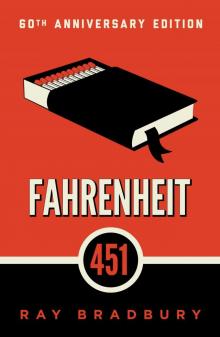 Fahrenheit 451
Fahrenheit 451 Zen in the Art of Writing
Zen in the Art of Writing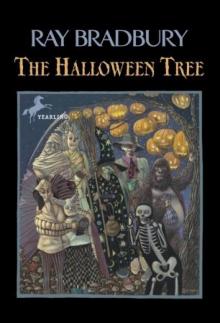 The Halloween Tree
The Halloween Tree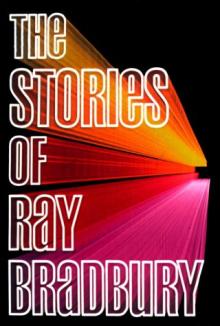 The Stories of Ray Bradbury
The Stories of Ray Bradbury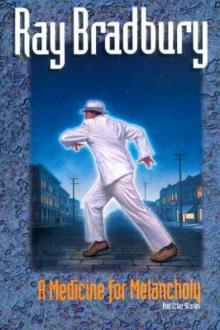 A Medicine for Melancholy and Other Stories
A Medicine for Melancholy and Other Stories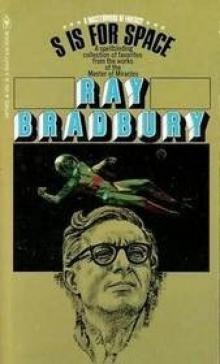 S Is for Space
S Is for Space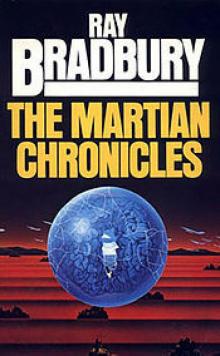 The Martian Chronicles
The Martian Chronicles Futuria Fantasia, Winter 1940
Futuria Fantasia, Winter 1940 Farewell Summer
Farewell Summer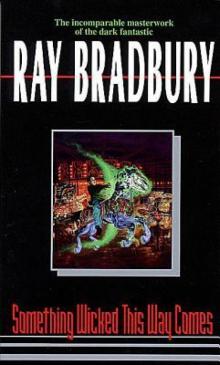 Something Wicked This Way Comes
Something Wicked This Way Comes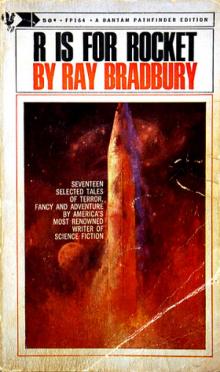 R Is for Rocket
R Is for Rocket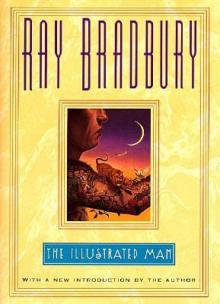 The Illustrated Man
The Illustrated Man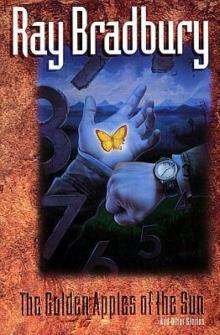 The Golden Apples of the Sun
The Golden Apples of the Sun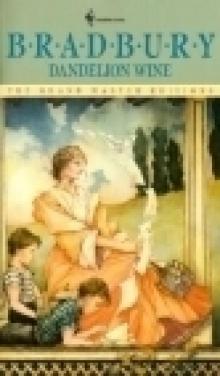 Dandelion Wine
Dandelion Wine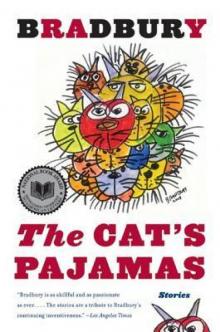 The Cat's Pajamas
The Cat's Pajamas A Graveyard for Lunatics
A Graveyard for Lunatics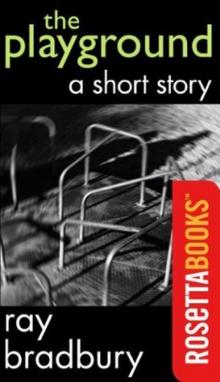 The Playground
The Playground We'll Always Have Paris: Stories
We'll Always Have Paris: Stories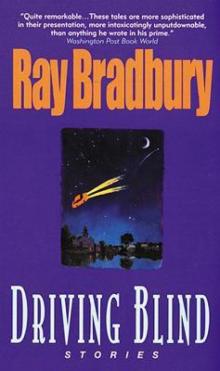 Driving Blind
Driving Blind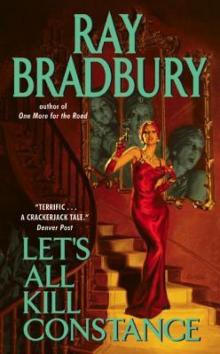 Let's All Kill Constance
Let's All Kill Constance The Day It Rained Forever
The Day It Rained Forever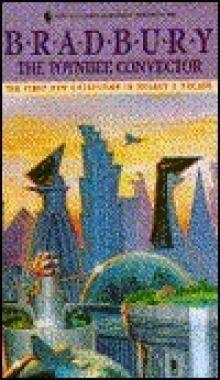 The Toynbee Convector
The Toynbee Convector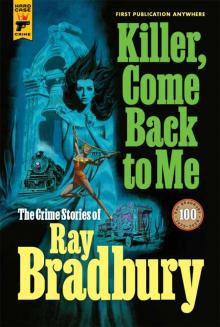 Killer, Come Back to Me
Killer, Come Back to Me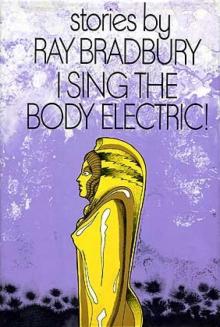 I Sing the Body Electric
I Sing the Body Electric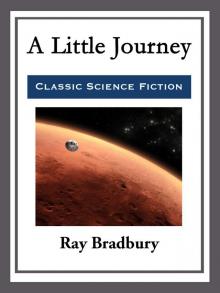 A Little Journey
A Little Journey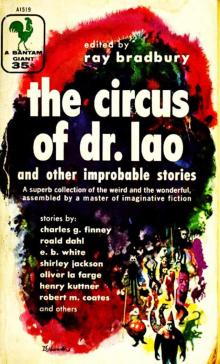 The Circus of Dr Lao and Other Improbable Stories
The Circus of Dr Lao and Other Improbable Stories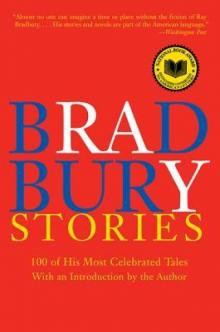 Bradbury Stories: 100 of His Most Celebrated Tales
Bradbury Stories: 100 of His Most Celebrated Tales From the Dust Returned
From the Dust Returned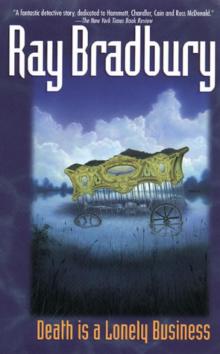 Death Is a Lonely Business
Death Is a Lonely Business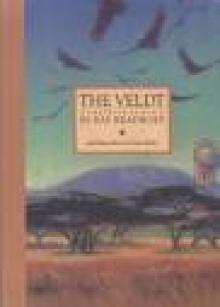 THE VELDT
THE VELDT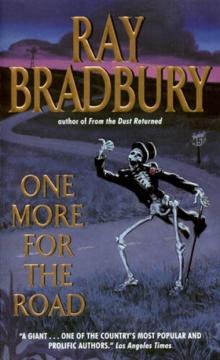 One More for the Road
One More for the Road Futuria Fantasia, Summer 1939
Futuria Fantasia, Summer 1939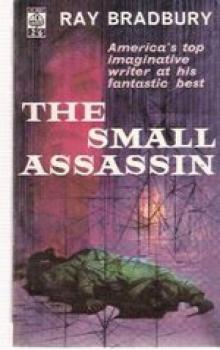 The Small Assassin
The Small Assassin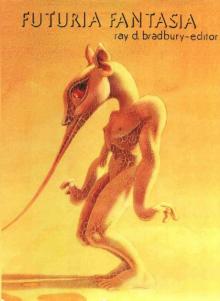 Futuria Fantasia, Fall 1939
Futuria Fantasia, Fall 1939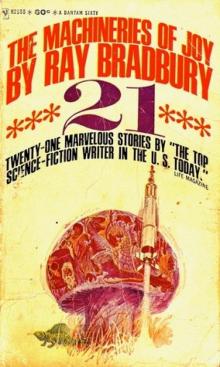 Machineries of Joy
Machineries of Joy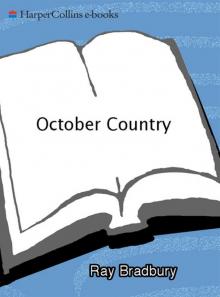 The October Country
The October Country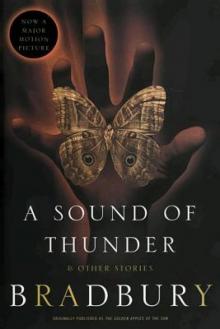 A Sound of Thunder and Other Stories
A Sound of Thunder and Other Stories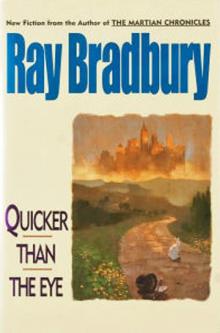 Quicker Than the Eye
Quicker Than the Eye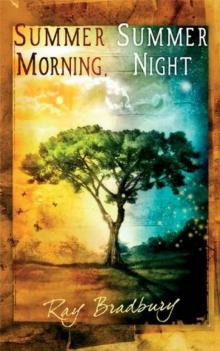 Summer Morning, Summer Night
Summer Morning, Summer Night Yestermorrow
Yestermorrow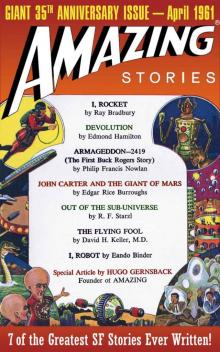 Amazing Stories: Giant 35th Anniversary Issue (Amazing Stories Classics)
Amazing Stories: Giant 35th Anniversary Issue (Amazing Stories Classics)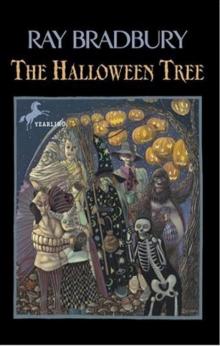 (1972) The Halloween Tree
(1972) The Halloween Tree Listen to the Echoes
Listen to the Echoes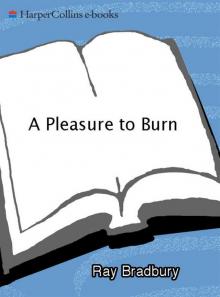 A Pleasure to Burn
A Pleasure to Burn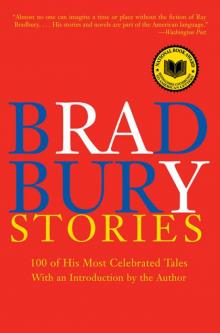 Bradbury Stories
Bradbury Stories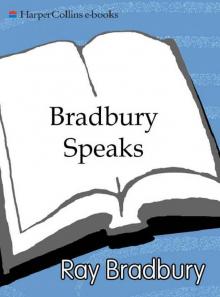 Bradbury Speaks
Bradbury Speaks Ray Bradbury Stories Volume 2
Ray Bradbury Stories Volume 2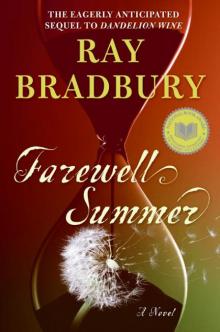 Farewell Summer gt-2
Farewell Summer gt-2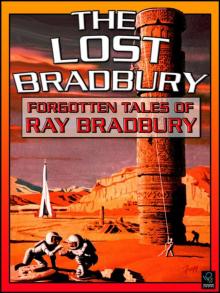 The Lost Bradbury
The Lost Bradbury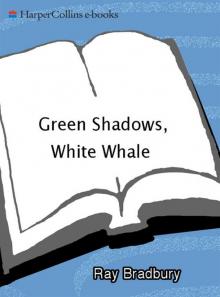 Green Shadows, White Whale
Green Shadows, White Whale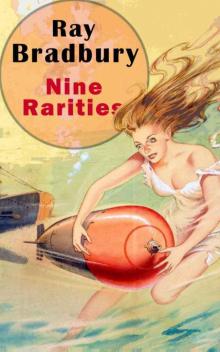 Nine Rarities
Nine Rarities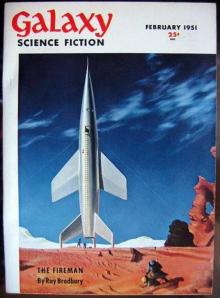 The Fireman
The Fireman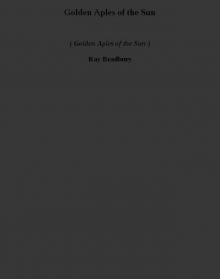 Golden Aples of the Sun (golden aples of the sun)
Golden Aples of the Sun (golden aples of the sun)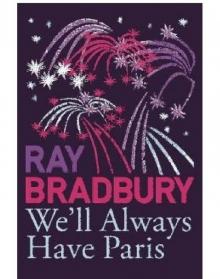 We'll Always Have Paris
We'll Always Have Paris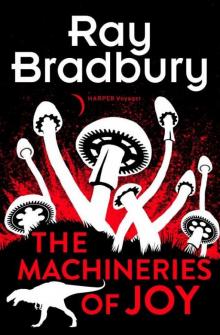 The Machineries of Joy
The Machineries of Joy A Graveyard for Lunatics cm-2
A Graveyard for Lunatics cm-2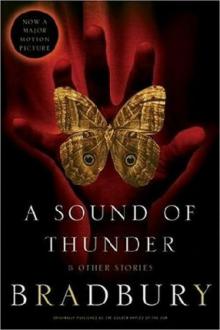 The Sound of Thunder
The Sound of Thunder Where Robot Mice and Robot Men Run Round In Robot Towns
Where Robot Mice and Robot Men Run Round In Robot Towns